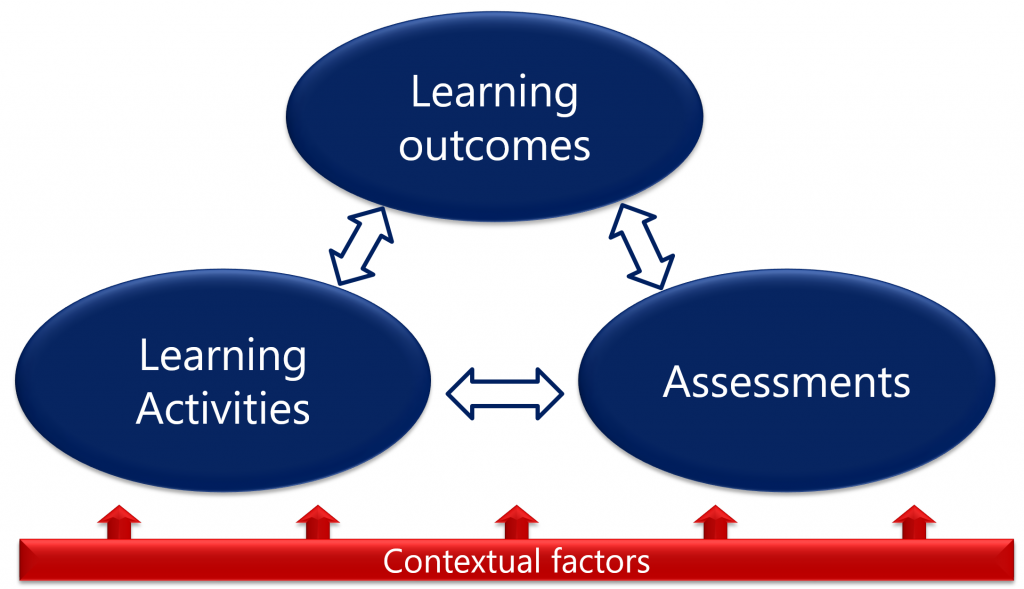Constructive alignment refers to alignment between three major elements of every course:
- The learning outcomes (i.e., learning goals or learning objectives) we hope students to achieve;
- The learning activities (e.g. lectures, readings, projects, assignments, etc.) we use to help students to develop in those goals; and
- The assessments we use to see whether or not students reached the goals.

This is all shaped by the specific contextual factors for the course, the learners, and the teacher (in this case, online learning is a significant factor).
To be constructively aligned, ensure you do the following:
Clearly articulate learning outcomes
- Do this for your course and for course activities
- These should be shared with students, such as in the syllabus, at the start of lectures, and in any project or assignment.
Align your course learning activities to develop the learning outcomes
- For example, do not assign readings (a low-level activity) and hope that from those readings alone that students will develop competency in analysis or evaluation (higher-level activities)
- Low-level activities (like reading, listening to a lectures, or watching a video) are generally only good for developing low-level outcomes (like remembering and understanding); high-level activities (like making an argument or recommendation and defending it, or devising a solution to a complex problem) draw from multiple levels
Assess students at a level that is consistent with the learning outcomes provided AND the learning activities used
- Assessments should measure student development and competency in the learning outcomes you have identified, and to the same level you have indicated in those learning outcomes.
- The types of tasks you ask students to perform in the assessments should have been practiced and modeled in the learning activities for your course. This does not mean simply repeating the same examples or practice problems from class on an assessment; it means there should be no surprises in terms of what is expected of students on assessments and exams. Remember, assessments are already stressful enough!
- As an example of misalignment, imagine yourself as a learner in a course on soil mechanics.
- Imagine you are provided a couple vague learning outcomes, such as “Through this course you will understand soil mechanics,” in the syllabus, and they are never mentioned again in the course.
- Now imagine the course learning activities consist of lectures where the instructor describes and demonstrates solving typical calculation problems related to soil mechanics, and the homework involves you solving similar problems on your own.
- Finally, imagine your final exam asks you to devise a new calculation approach for a problem type you have never seen before, and to use that to design an earth dam in a fictitious scenario.
- Most likely, you (and other students) in this example would be surprised and upset by this unexpected twist on the exam (and rightly so). Through the course you developed your ability to apply concepts to solve calculation-type problems, and there appears to have been no suggestion that a higher-level of competency was expected in the course or would be tested on the final exam. What’s more, there were no learning activities in the course to help you develop this competency.
| Previous (Bloom’s Taxonomy) | Next (The “Testing Effect”) |
